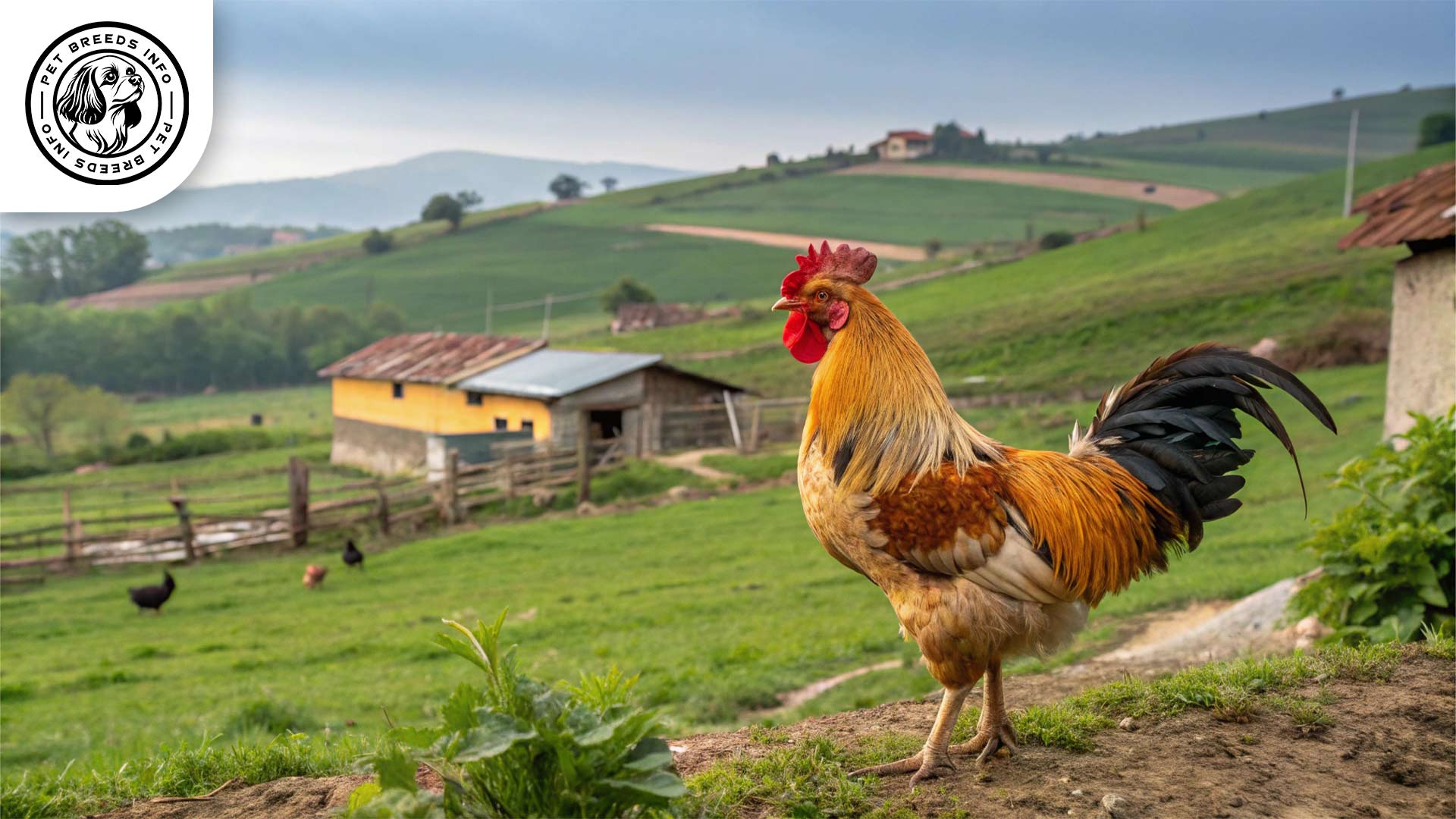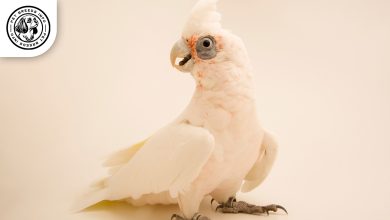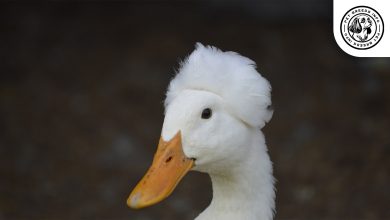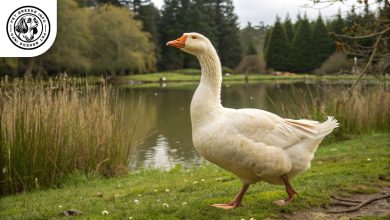Catalana Chicken Breed: Personality, Lifespan, Food & Care
General Introduction of the Breed
The Catalana Chicken, also known as the Catalan Chicken or Gallina Catalana, originates from Catalonia, Spain. This heritage breed was developed in the late 19th century as a dual-purpose bird valued for both eggs and meat production. It became popular across Spain and parts of Latin America due to its adaptability to hot climates and its excellent foraging abilities.
Table of Contents
| Common Name | Catalana Chicken |
| Scientific Name | Gallus gallus domesticus |
| Origin | Catalonia, Spain |
| Size | Medium; Roosters: 6.5–7.5 lbs, Hens: 5–6 lbs |
| Lifespan | 5–8 years |
| Colors | Golden-buff to reddish-brown with black-tipped tail |
| Talking Ability | Low—standard chicken vocalizations |
| Noise Level | Moderate—alert but not overly noisy |
| Social Behavior | Active, calm, independent, sometimes dominant in mixed flocks |
Physical Characteristics
The Catalana Chicken is a medium-sized breed. Roosters typically weigh between 6.5 to 7.5 pounds (3 to 3.4 kg), while hens weigh around 5 to 6 pounds (2.3 to 2.7 kg). Their plumage is golden-buff to reddish-brown with a black-tipped tail, giving them a striking and attractive appearance.
They have a single comb that is bright red and moderately serrated. Their earlobes are white or cream-colored, and their wattles are a deep red. The eyes are a vibrant reddish-brown, giving them a sharp and alert look. Their beaks are slightly curved and tend to be a pale horn color. Their legs are slate blue or gray, a distinctive trait of this breed.
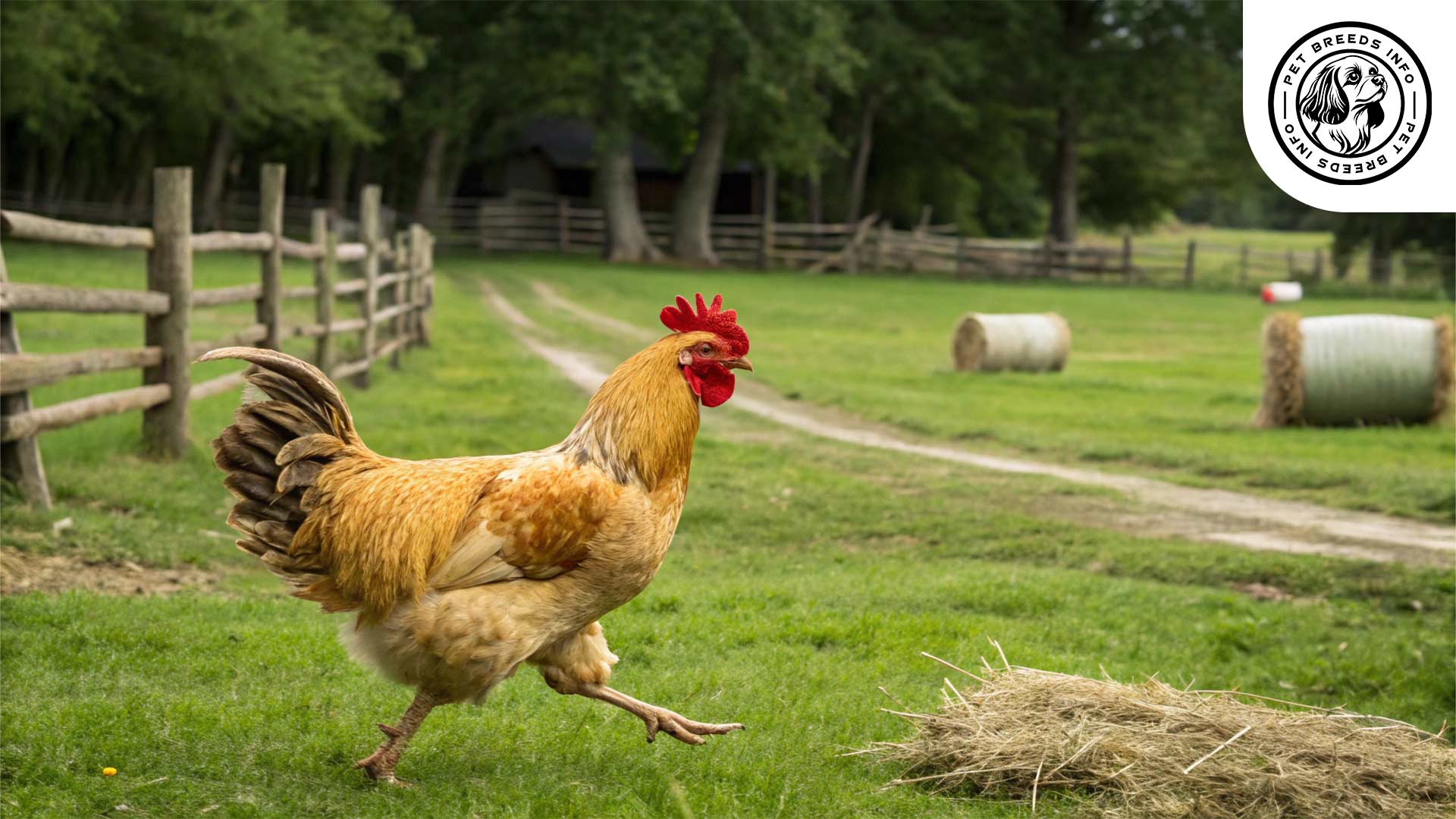
Personality and Temperament
The Catalana Chicken is known for its intelligence and strong foraging instincts, making it an excellent free-range breed. They are active and independent birds that thrive when allowed to roam and explore.
While not the most affectionate breed, they are calm and not overly aggressive. They are generally friendly toward their keepers but do not seek human attention as much as other breeds. They tolerate children well but are best suited to experienced poultry owners who appreciate their self-sufficient nature.
This breed can be somewhat wary of strangers, making them good for farm security as they alert their keepers to unusual activity. They adapt well to different environmental conditions, though they prefer warm climates.
Care and Maintenance Requirements
Catalana Chickens are highly active and require ample space to forage, making them better suited for backyard farms and rural settings rather than confinement in small coops.
They have low grooming needs as their feathers are naturally sleek and do not easily trap dirt. However, regular inspections for mites and lice are recommended. Their moderate-sized combs should also be checked for frostbite in colder regions.
Since they are heat-tolerant, they do well in hot climates but need adequate shelter and shade to prevent overheating. Fresh, clean water should always be available to keep them hydrated.
Diet and Nutrition
The Catalana Chicken thrives on a balanced diet consisting of high-quality poultry feed, grains, and protein-rich supplements. As excellent foragers, they benefit from access to insects, grass, and seeds, which supplement their diet.
Foods to avoid include moldy grains, salty foods, garlic, onions, and chocolate, as these can be harmful to chickens. Providing a calcium source, such as crushed oyster shells, ensures strong eggshell production.
Read More: Indian Runner Duck
Portion sizes depend on activity levels, but they should always have access to food throughout the day. Laying hens benefit from additional protein and calcium supplementation.

Health and Common Medical Issues
Catalana Chickens are generally hardy and have very few genetic health issues. However, they can be susceptible to common poultry ailments such as respiratory infections, external parasites like mites, and occasional foot injuries.
Their lifespan ranges between 5 to 8 years, though they can live longer with proper care.
Regular veterinary checkups, proper hygiene, and vaccinations for common poultry diseases such as Marek’s disease and Newcastle disease are recommended.
Training and Behavior Management
Although not typically trained like household pets, Catalana Chickens can learn routines and can be easily encouraged to return to their coop if trained with consistent feeding schedules.
Read More: Houdan Chicken
They respond well to positive reinforcement and food-based motivation. Socialization from a young age helps them get accustomed to human interaction and coop life.
The best way to manage their behavior is by providing them with a stimulating environment where they can freely roam, scratch, and forage.
Interaction with Other Animals and Humans
Catalana Chickens are generally tolerant of other poultry and livestock but may display dominant behaviors in mixed flocks. They are best kept with similarly active and independent breeds to avoid bullying.
They are not overly dependent on human companionship, making them well-suited for owners who prefer low-maintenance chickens. They can be handled but do not particularly enjoy frequent cuddling or handling.
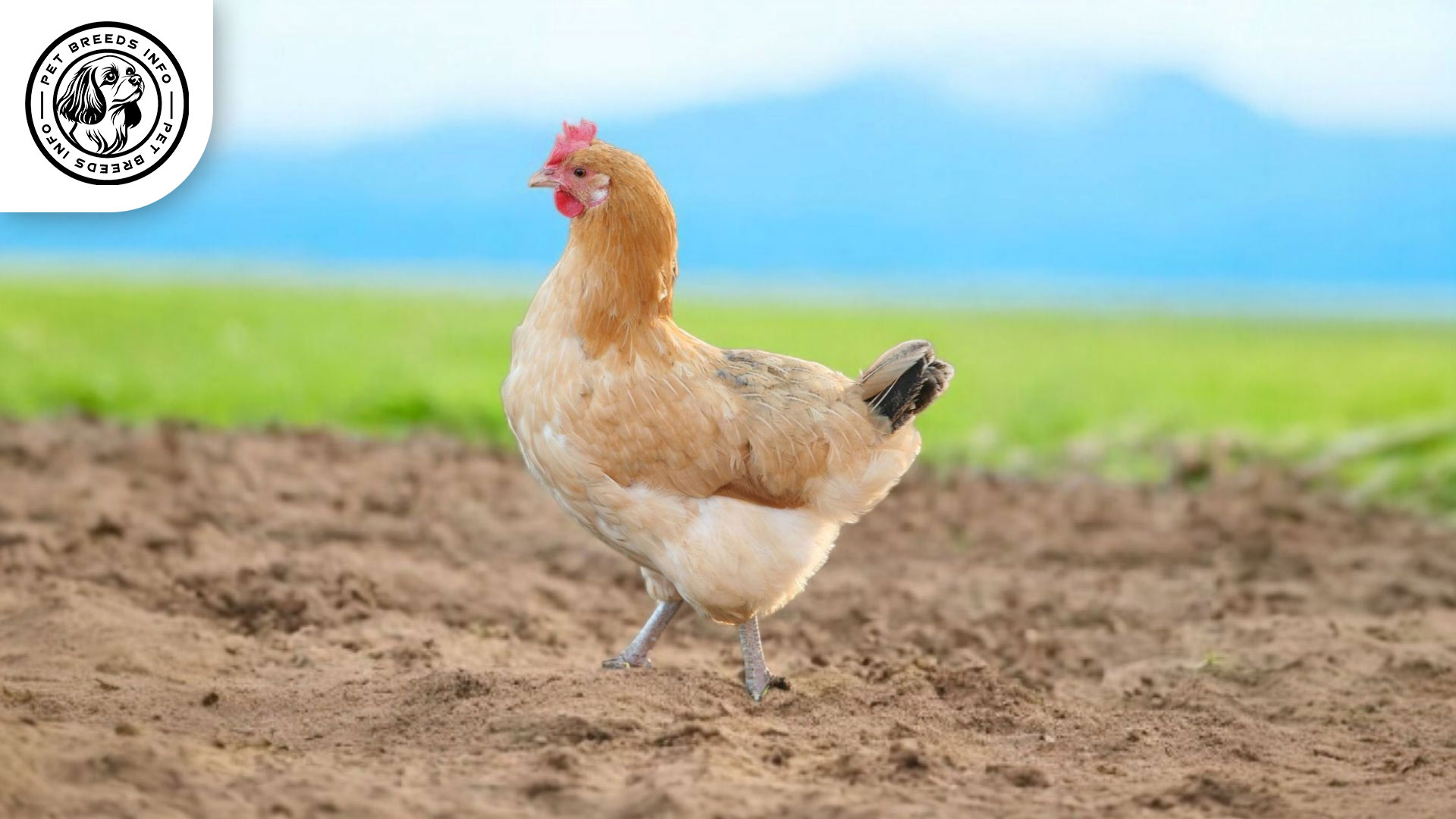
Price and Availability
The Catalana Chicken is a relatively rare breed outside Spain and Latin America, which can make it more expensive and harder to find. Depending on location and breeder reputation, chicks typically cost between $5 to $10 each, while pullets and breeding pairs can be more expensive.
For those looking to acquire this breed, the best sources are reputable hatcheries, poultry farms specializing in heritage breeds, and breed conservation programs.
Conclusion and Final Thoughts
The Catalana Chicken is an excellent breed for experienced poultry keepers seeking an independent, active, and heat-tolerant bird. With their strong foraging instincts and adaptability, they thrive in free-range environments and warm climates.
Read More: Campine Chicken
While they are not the most affectionate chickens, their calm disposition and low-maintenance care make them a great addition to any farm or backyard flock.
Potential owners should consider their need for space and ability to free-range before acquiring this breed, ensuring they can provide an environment where these birds can flourish.
FAQ
Where does the Catalana Chicken originate from?
It originates from Catalonia, Spain.
Is the Catalana Chicken good for egg production?
Yes, it’s a dual-purpose breed valued for both eggs and meat.
Are they suitable for cold climates?
They prefer warm climates but can tolerate colder areas with proper shelter and care.
Can Catalana Chickens be kept in small coops?
They do best with ample space to roam and are not ideal for small enclosures.
What makes their appearance distinctive?
Their golden to reddish-buff plumage with a black tail and slate-blue legs stand out.
